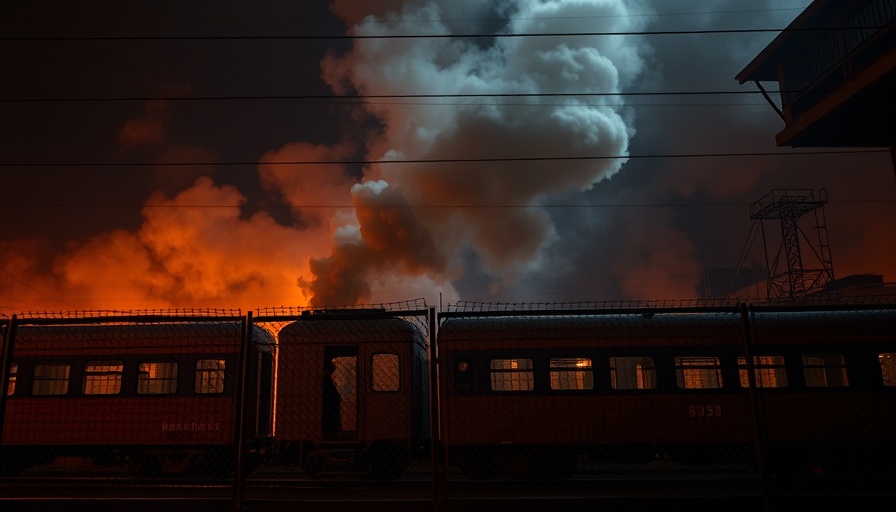
A Blazing Incident: Trains Aflame in Cape Town
In an alarming turn of events in the Cape Town Central Business District (CBD), train carriages caught fire along Old Marine Drive. This incident coincides with a stern warning from the South African Weather Service regarding damaging winds expected across the region. Local authorities responded promptly, mobilizing firefighters to address the blaze caused by what appears to be a combination of dry conditions exacerbated by dangerous wind patterns.
This significant incident raises pressing questions about safety protocols surrounding public transport, particularly considering Cape Town's vulnerability to severe weather and fire risks. While emergency services managed to contain the fire swiftly, worries linger about how such occurrences could escalate amid climate change and urban development constraints.
Understanding Fire Risks in Cape Town
Wildfires are not a new issue for Cape Town, which shares climatic characteristics with fire-prone regions like Los Angeles. With the recent train fire highlighting vulnerabilities, experts argue that better fire management strategies are essential. While the city has increasingly invested in rapid response mechanisms and preventative measures like firebreaks, the pressure on urban infrastructure persists.
Informal settlements are particularly at risk, as evidenced by reports of thousands of shack fires annually, affecting the lives of many underprivileged residents. The need to improve fire safety is evident, as shack fires destroy homes and occasionally result in tragic loss of life.
The Context of Climate Change and Urban Development
Climate change has made the landscape for urban fires even more precarious. According to environmental analysts, factors such as deforestation, alien plant invasion, and the rise of heatwaves contribute significantly to fire risks. Several studies, including a recent analysis of fire trends, indicate that without a solid plan to mitigate these environmental impacts, Cape Town faces a dire risk of experiencing disasters on the scale seen in recent California wildfires.
Philip Prins from the Cape Peninsula Fire Protection Association emphasized that proactive measures are vital. "You can only plan for it; you can’t prevent it," he stated, pointing to the importance of maintaining firebreaks and controlling the underbrush that can fuel wildfires.
Coping with Urban Fires: Strategies for Improvement
To mitigate future risks and improve response times, it is critical for Cape Town to enhance its infrastructure. Collaboration between various stakeholders, including government and non-governmental organizations, can lead to more effective fire management strategies that prioritize preventative measures. Expanding and maintaining firebreaks, clearing invasive species, and educating citizens on fire risks are pivotal steps for safeguarding communities.
Conclusion: A Call for Greater Preparedness
As the embers of concern still smolder from the recent train fire, it is imperative for Cape Town to reassess its approach to fire safety and urban planning. In doing so, local authorities can foster a culture of prevention that not only protects infrastructure but also saves lives. Residents are encouraged to stay informed and participate in community preparedness efforts that build resilience against future incidents.
Ultimately, the responsibility lies not just with the government but also with citizens to advocate for enhanced safety measures and actively engage in safeguarding their neighborhoods from the devastating impacts of urban fires.
 Add Row
Add Row  Add
Add 




Write A Comment